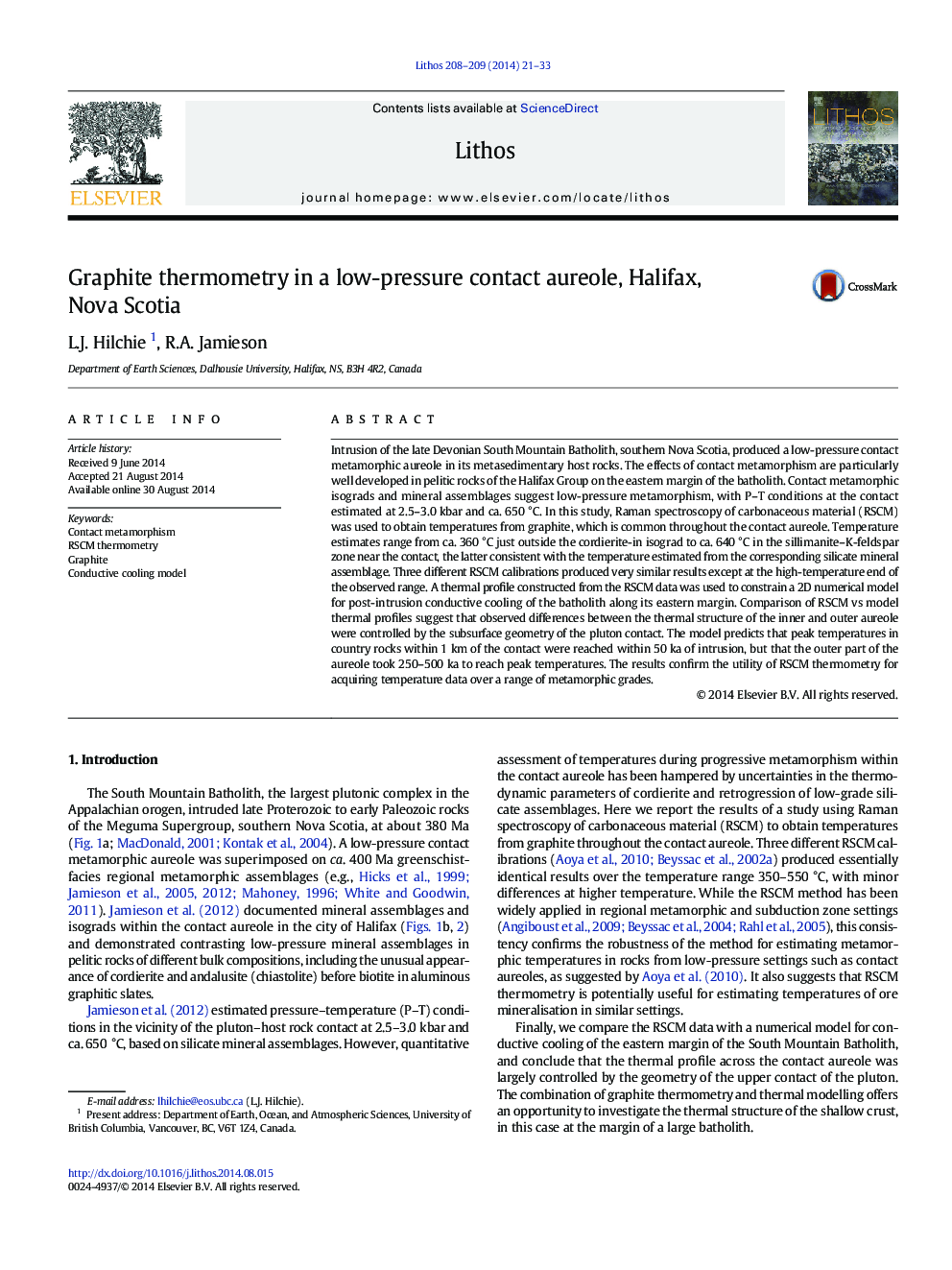| کد مقاله | کد نشریه | سال انتشار | مقاله انگلیسی | نسخه تمام متن |
|---|---|---|---|---|
| 4715901 | 1638671 | 2014 | 13 صفحه PDF | دانلود رایگان |
• Graphite thermometry by RSCM applied to a low-pressure contact aureole
• Graphite texture and Raman spectra linked to coexisting silicate assemblages
• Consistent results from 3 independent RSCM calibrations
• Thermal profile compared with conductive cooling model
• Local contact geometry was dominant control on thermal structure of aureole
Intrusion of the late Devonian South Mountain Batholith, southern Nova Scotia, produced a low-pressure contact metamorphic aureole in its metasedimentary host rocks. The effects of contact metamorphism are particularly well developed in pelitic rocks of the Halifax Group on the eastern margin of the batholith. Contact metamorphic isograds and mineral assemblages suggest low-pressure metamorphism, with P–T conditions at the contact estimated at 2.5–3.0 kbar and ca. 650 °C. In this study, Raman spectroscopy of carbonaceous material (RSCM) was used to obtain temperatures from graphite, which is common throughout the contact aureole. Temperature estimates range from ca. 360 °C just outside the cordierite-in isograd to ca. 640 °C in the sillimanite–K-feldspar zone near the contact, the latter consistent with the temperature estimated from the corresponding silicate mineral assemblage. Three different RSCM calibrations produced very similar results except at the high-temperature end of the observed range. A thermal profile constructed from the RSCM data was used to constrain a 2D numerical model for post-intrusion conductive cooling of the batholith along its eastern margin. Comparison of RSCM vs model thermal profiles suggest that observed differences between the thermal structure of the inner and outer aureole were controlled by the subsurface geometry of the pluton contact. The model predicts that peak temperatures in country rocks within 1 km of the contact were reached within 50 ka of intrusion, but that the outer part of the aureole took 250–500 ka to reach peak temperatures. The results confirm the utility of RSCM thermometry for acquiring temperature data over a range of metamorphic grades.
Journal: Lithos - Volumes 208–209, November 2014, Pages 21–33
